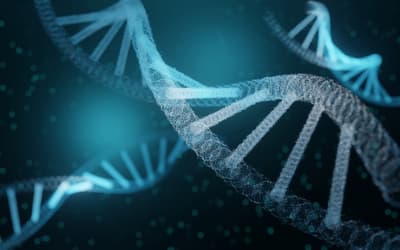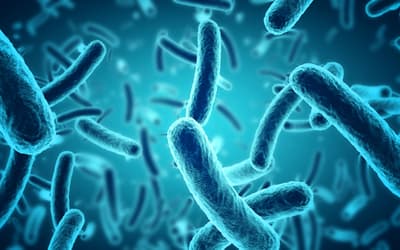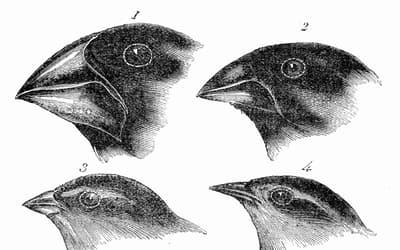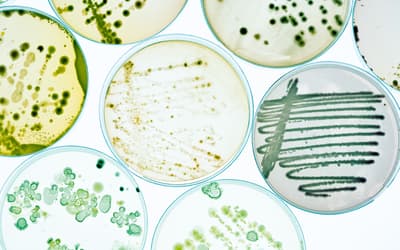Professional, peer-reviewed papers about microbes showing their role in the environment and disease, their design, and adaptive capabilities.

Facts Cannot be Ignored When Considering the Origin of Life #3: Necessity of Matching the Coding and the Decoding Systems
Change Laura Tan • March 23, 2022
DNA, however long it is and however many genes it can encode, is nothing without the molecular machineries to decode its encoded genes.

Facts Cannot Be Ignored When Considering the Origin of Life #2: Challenges in Generating the First Gene-encoding Template DNA or RNA
Change Laura Tan • March 23, 2022
This article argues that it is practically impossible to generate the first DNA (or RNA) template abiotically.

Inerrancy and Biblical Authority: How and Why Old-Earth Inerrantists Are Unintentionally Undermining Inerrancy
Dr. Terry Mortenson • Sept. 16, 2020
The old-earth signers of the CSBInerrancy unintentionally violated their own principles of interpretation and unintentionally undermined the inerrancy and the authority of Scripture.

Living Evidence of a Global Catastrophe: How Microbial Biogeography Supports Noah’s Flood
Dr. Andrew Fabich • Oct. 17, 2018
The biblical account of Noah’s Flood provides an update to modern microbial biogeography and modern creation apologetics.

Molecular Structures Shared by Prokaryotes and Eukaryotes Show Signs of Only Analogy and Not Homology
Jean O’Micks • Nov. 9, 2016
Until now there have been two basic theories on the evolution of cellular complexity.

Beyond the DNA-Protein Paradox: A “Clutch” of Other Chicken-Egg Paradoxes in Cell and Molecular Biology
Derrick M. Glasco • Aug. 31, 2016
The DNA-protein paradox has long been a point of contention in the origin of life debate.

Using Taxonomically Restricted Essential Genes to Determine Whether Two Organisms Can Belong to the Same Family Tree
Change Laura Tan • Nov. 4, 2015
How are all life forms connected? Are they linked by one giant family tree, a web, or a forest of family trees?

Challenging the BioLogos Claim that a Vitellogenin (Egg-Laying) Pseudogene Exists in the Human Genome
Jeffrey P. Tomkins • Oct. 21, 2015
Interestingly, BioLogos is probably the only evolutionary group that puts such a high level of focus on this hypothesis as key evidence for evolution.

The Genesis and Emergence of Community-Associated Methicillin-Resistant Staphylococcus aureus (CA-MRSA): An Example of Evolution in Action?
Dr. Alan L. Gillen , et. al. • Oct. 14, 2015
We have seen a changing profile from HA-MRSA to CA-MRSA. This is potentially dangerous because the new strains are more virulent and aggressive.

Documented Anomaly in Recent Versions of the BLASTN Algorithm and a Complete Reanalysis of Chimpanzee and Human Genome-Wide DNA Similarity Using Nucmer and LASTZ
Jeffrey P. Tomkins • Oct. 7, 2015
Past evolutionary research in comparative DNA analysis between chimps and humans has employed a great deal of preferential and selective data analysis.

A Young-Earth Creation Human Mitochondrial DNA “Clock”: Whole Mitochondrial Genome Mutation Rate Confirms D-Loop Results
Dr. Nathaniel T. Jeanson • Sept. 23, 2015
New data agree with the expectations from D-loop results, further confirming the origin of humans within 6000 years and rejecting evolutionary timescales.

Is HIV-1 Losing Fitness Due to Genetic Entropy?
Yingguang Liu • July 1, 2015
HIV-1 is an important example which shows genetic entropy operating throughout the biological realm, even while meaningful genetic adaptations are occurring.

Mutations in the nef Gene make HIV-1 More Virulent
Yingguang Liu • June 17, 2015
Mutational degeneration of the nef gene manifests as increased pathogenicity of HIV-1.

Cyclic Selection in HIV–1 Tropism: Microevolution That Is Going Nowhere
Yingguang Liu • April 29, 2015
The molecular interaction of HIV-1 is merely cyclic fine-tuning of an existing function and illustrates the broken relationship between the virus and the host.

Information Processing Differences Between Bacteria and Eukarya—Implications for the Myth of Eukaryogenesis
Change Laura Tan , et. al. • March 25, 2015
Based on differences in gene sets and molecular machines between bacteria and eukarya, we continue to demonstrate that unbridgeable evolutionary chasms exist.

Information Processing Differences Between Archaea and Eukarya—Implications for Homologs and the Myth of Eukaryogenesis
Change Laura Tan , et. al. • March 18, 2015
In the grand evolutionary paradigm, the origin of the eukaryotic cell represents one of the great mysteries and key hypothetical transitions of life.

Natural Selection: Assessing the Role It Plays in our World
Dr. Jean Lightner • March 4, 2015
Natural selection is controversial among many scientists, both in evolutionary and creationary circles.

Parasitology and Creation
Dr. Matthew E. Ingle • Feb. 4, 2015
As we learn more about parasites, which don’t seem to be “good” design, we will understand better how the parasitic lifestyle resulted from the Fall.

Reply to “A Response to ‘Does Natural Selection Exist?’”
Dr. Nathaniel T. Jeanson • Nov. 5, 2014
In this three-part ~35,000-word response, Guliuzza (2014a, b, c) fails to clearly define his terms and/or use them consistently.

A Response to “Does Natural Selection Exist?”: Creatures’ Adaptation Explained by the Design-based, Organism-driven Approach: Part 3
Randy J. Guliuzza • Nov. 5, 2014
This third installment is a continuation of my response to a recent critical paper (Jeanson 2013).

A Response to “Does Natural Selection Exist?”: Creatures’ Adaptation Explained by the Design-based, Organism-driven Approach: Part 2
Randy J. Guliuzza • Oct. 29, 2014
This second installment is a continuation of my response to a recent critical paper (Jeanson 2013) on a series of Acts & Facts articles.

A Response to “Does Natural Selection Exist?”: Creatures’ Adaptation Explained by the Design-based, Organism-Driven Approach: Part 1
Randy J. Guliuzza • Oct. 29, 2014
This paper responds to a 2013 Jeanson paper critical of a series of Acts & Facts articles published by the Institute for Creation Research (ICR).

The Human GULO Pseudogene—Evidence for Evolutionary Discontinuity and Genetic Entropy
Jeffrey P. Tomkins • April 2, 2014
Modern genomics provides the ability to screen the DNA of a wide variety of organisms to scrutinize broken metabolic pathways. This data has revealed wide-spread genetic entropy in human genomes.

Recent, Functionally Diverse Origin for Mitochondrial Genes from ~2700 Metazoan Species
Dr. Nathaniel T. Jeanson • Dec. 11, 2013
The young-earth creation model currently lacks a robust explanation for molecular diversity.

How Genomes are Sequenced and Why it Matters: Implications for Studies in Comparative Genomics of Humans and Chimpanzees
Jeffrey P. Tomkins • June 22, 2011
When evaluating comparisons between genomes using DNA sequence, it is important to understand the nature of how that sequence was obtained and bioinformatically manipulated before drawing conclusions.

Towards a Creationary Classification of Mutations
Jonathan Bartlett • Dec. 2, 2009
Mutations are normally classified according to their proximal effect on an organism’s fitness, whether beneficial, deleterious, or neutral.

The Role of Genomic Islands, Mutation, and Displacement in the Origin of Bacterial Pathogenicity
Dr. Georgia Purdom • Oct. 28, 2009
Bacteria are mostly beneficial, even though a minority are known as pathogens. They are necessary for natural processes such as human digestion and biogeochemical cycling.

Fungi from the Biblical Perspective
Ira Loucks • Oct. 21, 2009
Fungi are intriguing organisms with a wealth of diversity in their morphology and ecology. Determining the fundamentals of their biology from a biblical perspective is a daunting but achievable task.

A Possible Function of Entamoeba histolytica in the Creation Model
Frank Sherwin • Oct. 14, 2009
There is a need for parasites such as Entamoeba histolytica to be addressed from a biblical perspective that may include their original symbiotic or mutualistic association in man.

A Review of Mitoribosome Structure and Function Does not Support the Serial Endosymbiotic Theory
Daniel Criswell • Oct. 7, 2009
It is apparent from the knowledge gained about mitochondria ribosome structure and function since the proposal of the Serial Endosymbiosis Theory that prokaryotes are not the ancestors of eukaryotes.

The Natural History of Retroviruses
Yingguang Liu , et. al. • Sept. 30, 2009
Evolutionists assume that all endogenous retroviruses are remnants of germ line infection by exogenous retroviruses.

More Abundant than Stars
Dr. Georgia Purdom , et. al. • Sept. 23, 2009
Microbes form a life-sustaining organosubstrate on earth and contribute to our understanding of geology, ecology, and biology.

Toward An Understanding of Arbuscular Mycorrhizal Fungi
Tom Hennigan • Feb. 18, 2009
As we seek to discover the intent of the Designer, we can enhance our stewardship of the land by using this symbiosis to re-establish polluted and disturbed landscapes and grow sustainable crops.

Bacterial Attenuation and its Link to Innate Oncolytic Potential
Luke Kim • Oct. 15, 2008
Although bacteria have been mainly recognized as disease causing agents, there are abundant scientific evidences that bacterial pathogenicity is not the major biological function of bacteria.

Louis Pasteur’s Views on Creation, Evolution, and the Genesis of Germs
Dr. Alan L. Gillen , et. al. • Dec. 27, 2020
Shortly after Darwin published On the Origin of Species, Pasteur began to challenge the idea of spontaneous generation.

Microbes and the Days of Creation
Dr. Alan L. Gillen • Jan. 16, 2008
The world of germs and microbes has received much attention in recent years. But where do microbes fit into the creation account?

Proceedings of the Microbe Forum, June 2007
Dr. Joe Francis , et. al. • Jan. 9, 2008
For many years the roles of microbes as part of God’s wonderful design have been neglected. Perhaps it is because many people associate microbes as the cause of death, disease, and suffering.
Microbiology on Answers Research Journal
Evolutionists assert that all life arose from a single-celled common ancestor over millions of years. Bacteria, also known as prokaryotes, are thought to represent simple organisms that closely resemble that first life. The endosymbiotic theory proposes that certain types of bacteria were engulfed by other cells resulting in the evolution of eukaryotic cells. The bacteria maintained a symbiotic relationship with the cells, becoming what we know today as mitochondria and chloroplasts. Microbes (bacteria, fungi, viruses, protozoans) exist in nearly every place on earth and perform important functions. They have roles in decomposition, symbiotic relationships with other organisms, nutrient cycles, and regulation of microbial populations. Very few microbes are pathogenic and cause disease.
The aim of these research papers in Answers Research Journal (ARJ) is to show that microbes are complex organisms that have been designed by God. These professional, peer-reviewed papers address issues related to microbes and how that relates to other disciplines. Our journal considers microbes in light of creation, evolution, genetics, the Fall, Noah’s Flood, symbiotic relationships, genome integration, and more.
God created microbes to be a biomatrix that connects the physical world with the living world. Through their work in decomposition and nutrient cycles, microbes liberate nutrients that in turn are used by plants, animals, and humans. Viruses and bacteria keep microbial populations balanced. However, due to the Fall, mutations in microbes have led to disease. God designed microbes to adapt and change to survive in a fallen world, but this is not an example of evolution. Adaptation doesn’t result in anything new, and microbes remain microbes.
